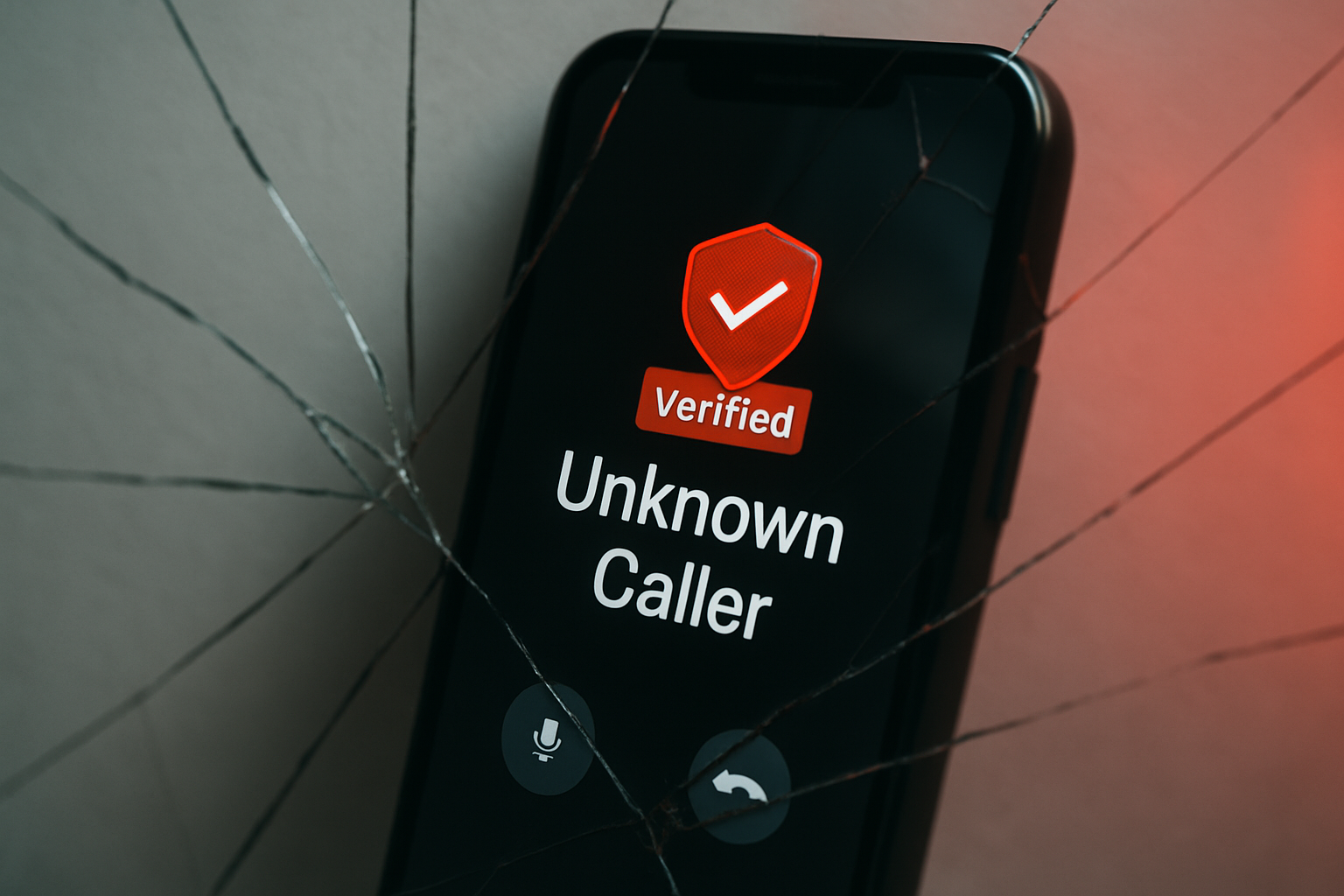Attestation ≠ Authentication
Why Header Data Doesn’t Tell the Whole Story
Let’s pull back the curtain on something that looks simple—but isn’t.
Attestation labels (A, B, C) from the STIR/SHAKEN framework may offer a quick snapshot of a call’s trust level, but they don’t guarantee full authentication. These tags can be spoofed, allowing fraudulent calls to slip through or legitimate ones to be mislabeled and dropped—especially with cross-border telecom traffic. Relying solely on header data leaves businesses exposed to quality and trust issues. The stronger solution is certificate-based call authentication, which verifies caller identity in real time using encrypted metadata and validation logs—offering a more reliable safeguard than attestation alone.
The Hidden Risks Behind Low Attestation
When you see a “C” label on a call, you might think, “That’s low trust, so we block it.” But without digging into the validation logs, you may be turning away legitimate business calls—like those from an overseas supplier or a long-time customer. These silent failures rarely trigger alerts but chip away at your connection success rate. And these aren’t just telecom-specific issues; they echo similar patterns in IT infrastructure assessments or audits that uncover outdated device inventory and forgotten subscriptions, often after the fact—not before.
If low-attested calls are frequently sent to voicemail or dropped entirely, customer satisfaction plummets without any obvious error showing. The network appears to work, but connection reliability is suffering, silently. For businesses handling high volumes of outbound calls—especially those in sales or support—this can easily translate into missed opportunities, tarnished brand perception, and revenue erosion. That’s why addressing dropped call issues and voice call congestion requires more than firewall filters; it demands full visibility into every call’s journey.
Real-Time Call Filtering: The Missing Piece
Imagine this scenario: a flood of AI bot telecom traffic rolls through, triggering high system load. Without real-time call filtering, legitimate calls get buried, as if lost in a digital black hole. This is exactly what many networks experience during voice traffic surges. Traditional validation systems work post-facto—after the headers have been read and tagged. But real-time certificate-based filtering operates at the point of entry—an EDGE call validation stack combines both header and certificate metadata in real time, checking for anomalies or mismatches and flagging suspicious ones before damage is done.
Real-time call filtering does more than prevent fraud. It acts as a quality gate, ensuring that traffic surging from hybrid teams or sudden campaign spikes remains clean. This constant vigilance reduces dropped calls, improves call arrival times, and maintains voice path consistency during unexpected congestion. In environments where voice call congestion can mean lost deals or frustrated clients, blocking the noise before it reaches critical systems is essential.
Use Cases That Show the Difference
Consider a global supply company relying on cross-border telecom traffic daily. Suddenly, their partner in Europe couldn’t reach them—most calls showed a “C” label and got routed through spam filters. After adding certificate-based call authentication via 1Route, validation logs confirmed those calls were genuine. The upgrade didn’t just cut down on dropped call issues—it boosted complete call rates by 12% overnight.
In another example, a financial services provider saw a surge in spoofed calls mimicking their toll-free number. Although these calls were technically A-attested by fraudsters, only real-time certificate checks were able to detect the mismatch during the handoff, preventing dozens of phishing attempts per day. This led to a 25% drop in fraud reports and restored trust with their customer service team.
Call centers have seen similar improvements. At one mid-size BPO, issues weren’t fraud-based—they were caused by mismatched routing across multiple carriers and regional providers. Validation logs revealed which handoffs cut off audio integrity. Armed with that data, they optimized their route selection—a change that reduced dropped calls by nearly 30% in six weeks.
Authentication’s Place in a Modern Network
Modern telecom infrastructures feel complex, but they shouldn’t be fragile. Whether you’re operating in SIP, TDM, or hybrid systems, certificate-based authentication fits cleanly into existing frameworks and provides immediate benefits. It speeds up SIP connection handshakes and supports tighter compliance with ccTLD-by-ccTLD regulations. It also offers measurable boosts in service quality—call completion rates improve, spam mislabeling drops, and carriers can finally trust the path of their traffic.
This kind of call authentication complements—not replaces—attestation. It means that when fraudsters try to piggyback on a valid caller ID, the system confirms or denies it using cryptographic proof, not just labels. In environments where telecom overload is already testing infrastructure limits, this method acts like a smart valve, letting in good traffic while cutting off the bad and the unwanted. It’s proactive, not just reactive.
What You Can Do Today
Start small. If you’re seeing declining connection rates or recurring user complaints, check your validation logs. Look for correlation patterns between low attestation and dropped or mislabeled calls. Then consider adding a certificate-based call authentication trial on a subset of your routes. By doing so, you can compare voice quality, jitter rates, call completion, and false positive spikes between one path with strong validation and another without.
If you’re managing a complex telecom landscape—supporting remote teams, global clients, or high-volume marketing campaigns—this approach helps secure your network without overhauling it. You don’t need to rip out your current systems; you just need a stronger layer that watches over them in real time.
Why It Matters
The voice channel remains a lifeline for many industries—finance, healthcare, logistics, customer support. Yet call traffic is no longer simple. It’s strained by bot volumes, amplified by hybrid work models, and sliced by routing across multiple carriers. Networks that rely solely on attestation are leaving trust on the table—sometimes hidden in plain sight.
By combining attestation with certificate-based validation and real-time filtering, you get more than just spam defense. You get better call quality, higher answer rates, and more brand trust. That means your voice channel no longer just connects — it convinces.

